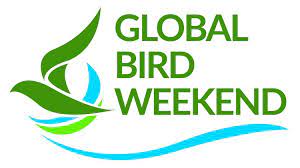The results from the big weekend of birding are in. The two global birding events in celebration of World Migratory Bird Day, namely , Global Bird Weekend and the October Big Day resulted in
T
The October Big Day, was on the Saturday of that weekend. Some 32,670 birders from 195 countries submitted 78,024 checklists with 7,269 species, 43,153 photographs, and 1,170 audio recordings to www.ebird.org. It was also noted on the ebird website that more than 2,800 contributors submitted their first checklist to this site on that day.
Our beautiful island was also part of the do. We recorded 60 species for October
Big Day, which was the 8th highest species count among the islands of the West
Indies. It was also six less than
our highest count of 66 species which was
It was a big weekend of birding locally and internationally, as birders came together on World Migratory Bird Day to raise awareness of migratory birds and the need for international cooperation to conserve them. This international effort caused us to “Sing, Fly, Soar – Like a Bird!”. Until our next
Here is a list of species seen over the 3 days, also click here for images
- Black-bellied Whistling-Duck - Dendrocygna autumnalis
- Blue-winged Teal - Spatula discors
- Pied-billed Grebe - Podilymbus podiceps
- Rock Pigeon - Columba livia
- Scaly-naped Pigeon - Patagioenas squamosa
- Eurasian Collared-Dove - Streptopelia decaocto
- Common Ground Dove - Columbina passerina
- Zenaida Dove - Zenaida aurita
- Green-throated Carib - Eulampis holosericeus
- Antillean Crested Hummingbird - Orthorhyncus cristatus
- American Coot - Fulica americana
- Common Gallinule - Gallinula galeata
- Black-bellied Plover - Pluvialis squatarola
- American Golden-Plover - Pluvialis dominica
- Semipalmated Plover - Charadrius semipalmatus
- Whimbrel - Numenius phaeopus
- Hudsonian Godwit - Limosa haemastica
- Ruddy Turnstone - Arenaria interpres
- Stilt Sandpiper - Calidris himantopus
- Sanderling - Calidris alba
- Least Sandpiper - Calidris minutilla
- White-rumped Sandpiper - Calidris fuscicollis
- Buff-breasted Sandpiper - Calidris subruficollis
- Pectoral Sandpiper - Calidris melanotos
- Semipalmated Sandpiper - Calidris pusilla
- Western Sandpiper - Calidris mauri
- Short-billed Dowitcher - Limnodromus griseus
- Wilson's Snipe - Gallinago delicata
- Spotted Sandpiper - Actitis macularius
- Solitary Sandpiper - Tringa solitaria
- Greater Yellowlegs - Tringa melanoleuca
- Willet - Tringa semipalmata
- Lesser Yellowlegs - Tringa flavipes
- Laughing Gull - Leucophaeus atricilla
- Least Tern - Sternula antillarum
- Roseate Tern - Sterna dougallii
- Royal Tern - Thalasseus maximus
- Magnificent Frigatebird - Fregata magnificens
- Great Egret - Ardea alba
- Little Egret - Egretta garzetta
- Snowy Egret - Egretta thula
- Little Blue Heron - Egretta caerulea
- Tricolored Heron - Egretta tricolor
- Cattle Egret - Bubulcus ibis
- Green Heron - Butorides virescens
- Striated Heron - Butorides striata
- Black-crowned Night-Heron - Nycticorax nycticorax
- Glossy Ibis - Plegadis falcinellus
- Snail Kite - Rostrhamus sociabilis
- Belted Kingfisher - Megaceryle alcyon
- Peregrine Falcon - Falco peregrinus
- Rose-ringed Parakeet - Psittacula krameri
- Caribbean Elaenia - Elaenia martinica
- Gray Kingbird - Tyrannus dominicensis
- Caribbean Martin - Progne dominicensis
- Barn Swallow - Hirundo rustica
- Shiny Cowbird - Molothrus bonariensis
- Carib Grackle - Quiscalus lugubris
- Yellow Warbler - Setophaga petechia
- Grassland Yellow-Finch - Sicalis luteola
- Bananaquit - Coereba flaveola
- Barbados Bullfinch - Loxigilla barbadensis
- Black-faced Grassquit - Melanospiza bicolor


















